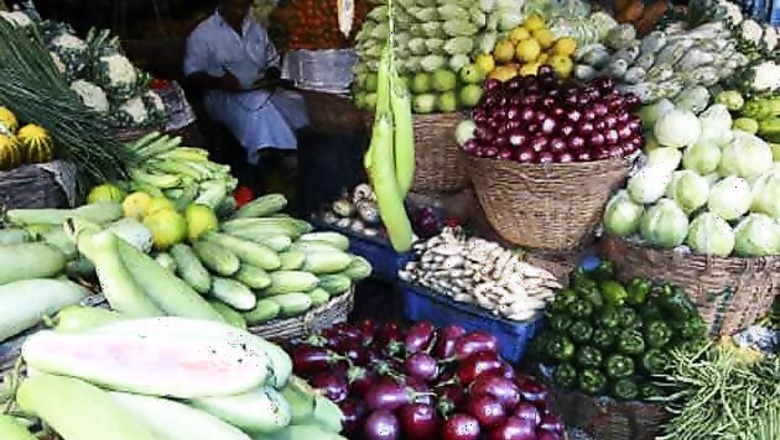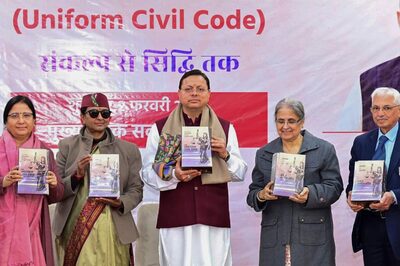
views
New Delhi: Food prices fell for the second consecutive week as food inflation remained in the negative zone at -2.90 per cent for the week ended December 31, 2011. Food inflation, as measured by the Wholesale Price Index (WPI), stood at -3.36 per cent in the previous week. It was above 19 per cent in the corresponding week of 2010.
According to data released on Thursday, onions became cheaper by 74.77 per cent year-on-year during the week under review, while potato prices were down by 31.97 per cent. Prices of wheat also fell by 3.35 per cent.
Overall, vegetables became 49.03 per cent cheaper during the week ended December 31.
The fall in the rate of price rise of food items since the first week of November is substantial, as it has plummeted from double-digit territory into the negative zone.
Experts feel that the decline in food inflation will be a major incentive for the Reserve Bank to look at the option of cuts in key interest rates at its next quarterly monetary policy review later this month.
However, other food products became more expensive on an annual basis, led by protein-based items.
Pulses were 14.72 per cent costlier during the week under review, while milk grew dearer by 10.79 per cent. Egg, meat and fish prices were up 15.22 per cent year-on-year.
Fruits also became 9 per cent more expensive on an annual basis, while cereal prices were up 2.03 per cent.
Inflation in the overall primary articles category stood at 0.51 per cent during the week ended December 31, as against 0.10 per cent in the previous week. Primary articles have over 20 per cent weight in the wholesale price index.
Inflation in the non-food segment, which includes fibres and oilseeds, was recorded at 1.29 per cent during the week under review, as against 0.85 per cent in the week ended December 24, 2011.
Fuel and power inflation stood at 14.45 per cent during the week ended December 31, as against 14.60 per cent in the previous week.
Headline inflation, which also factors in manufactured items, has been above the 9 per cent-mark since December, 2010. It stood at 9.11 per cent in November, 2011.
The RBI has hiked interest rates 13 times since March, 2010, to tame demand and curb inflation.
In its second quarterly review of the monetary policy last month, the central bank had said it expects inflation to remain elevated till December on account of the demand-supply mismatch before moderating to 7 per cent by March, 2012.




















Comments
0 comment